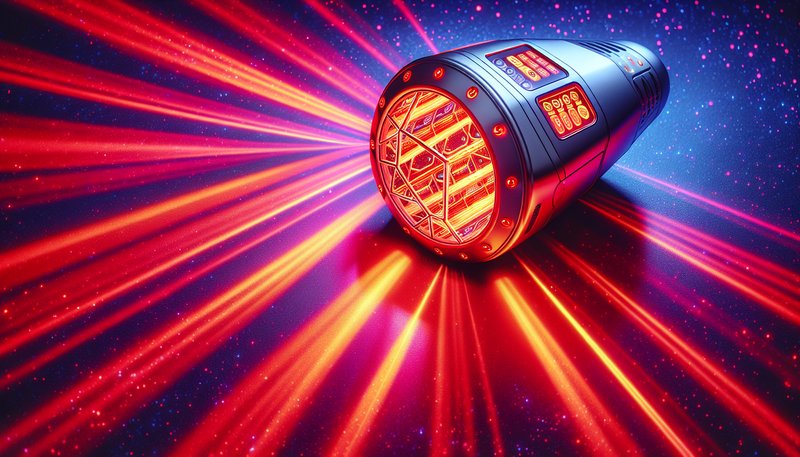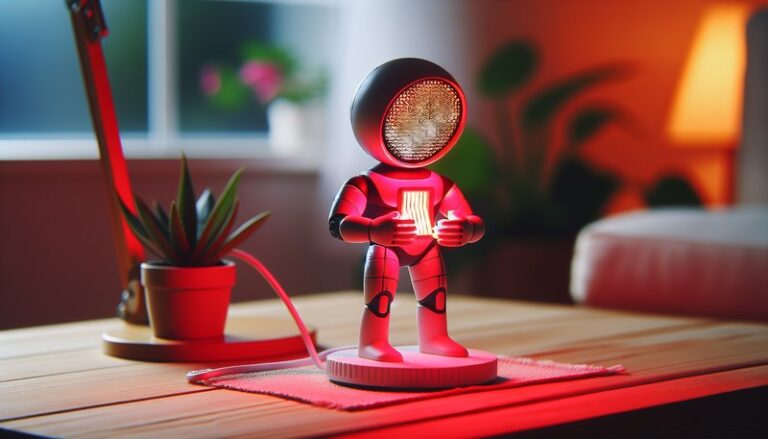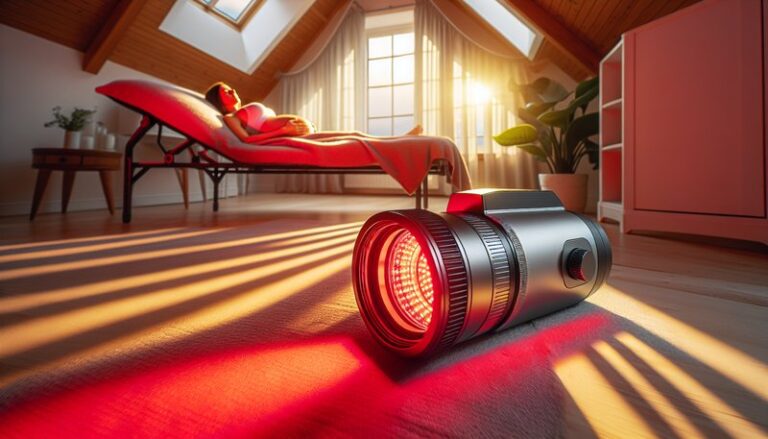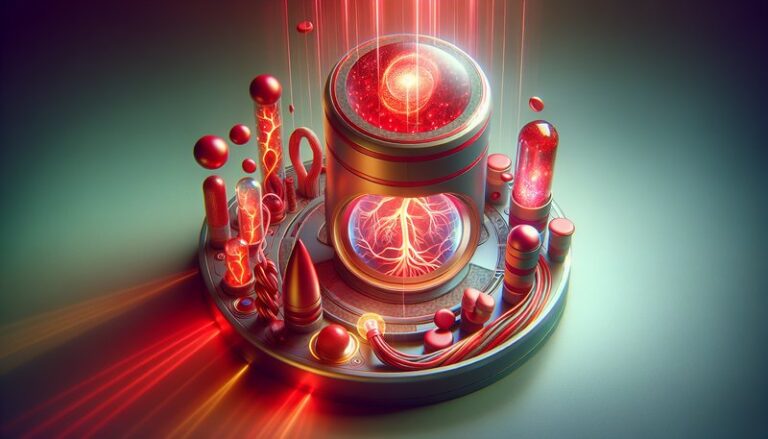Can Red Light Therapy Help Eczema?
Are you struggling with eczema and searching for relief? You might be curious about the potential benefits of red light therapy.
In this article, we will explore the efficacy of red light therapy in treating eczema, its benefits, considerations, and alternatives. We aim to provide a comprehensive overview to help you make informed decisions regarding your skin health.
Key Takeaways
- Red light therapy may help reduce inflammation and promote healing in eczema-affected skin.
- It is non-invasive and generally considered safe with minimal side effects.
- A combination of red light therapy and traditional eczema treatments may yield the best results.
What is Red Light Therapy?
Red light therapy, also known as low-level laser therapy (LLLT) or photobiomodulation, involves using specific wavelengths of red and near-infrared light to promote healing at the cellular level. This technique stimulates cellular energy production in the form of adenosine triphosphate (ATP), which enhances the body’s natural healing processes.
Red light therapy can penetrate the skin and increase blood flow, encouraging the healing of tissues while reducing inflammation and pain. While it has been employed in various medical contexts, its application for skin conditions like eczema is gaining attention.
Learn the full details in Does Red Light Therapy Cause Cancer?
How Does Red Light Therapy Work?
Red light therapy works by:
- Stimulating mitochondrial function in skin cells.
- Enhancing circulation, which brings essential nutrients to the skin.
- Reducing oxidative stress, leading to a decrease in inflammation.
These actions may help improve skin conditions, including eczema.
What are the Benefits of Red Light Therapy?
Red light therapy offers several potential benefits for individuals suffering from eczema. Below are some of the key advantages:
Reduction of Inflammation
Chronic inflammation is a primary factor in eczema flare-ups. Red light therapy may help reduce inflammation, promoting a more balanced immune response and alleviating symptoms like redness and itching.
Enhanced Skin Healing
The therapy may accelerate wound healing and skin regeneration. By boosting collagen and elastin production, it can help restore the skin barrier, an essential aspect of managing eczema.
Pain Relief
For some individuals, eczema can be accompanied by discomfort and pain. Red light therapy may provide localized pain relief due to its anti-inflammatory properties, making it easier to manage flare-ups.
General Skin Health Improvement
In addition to treating eczema, red light therapy can improve overall skin health, enhancing tone, texture, and elasticity. This can benefit those with eczema, as a healthier skin barrier may reduce the severity and frequency of flare-ups.
Is it Possible to Use Red Light Therapy for Eczema?
Yes, red light therapy can be used to help manage eczema. Many individuals have reported positive outcomes, such as clearer skin and reduced symptoms. However, it’s essential to approach treatment with a comprehensive plan.
What are the Advantages of Using Red Light Therapy for Eczema?
-
Non-Invasive Treatment: Traditional eczema treatments can sometimes involve steroids or other medications with significant side effects. Red light therapy is a non-invasive alternative that can be easily integrated into a regular skincare routine.
-
Minimal Side Effects: Most users report mild or no side effects, making it a suitable option for people who are sensitive to medication.
What are the Disadvantages of Using Red Light Therapy for Eczema?
-
Variable Results: Not everyone experiences the same level of benefit from red light therapy. Results can vary based on individual responses.
-
Access and Cost: Equipment for red light therapy can be expensive, and treatments may not always be covered by insurance.
What are the Things to Consider Before Using Red Light Therapy for Eczema?
Before starting red light therapy, consider the following:
See the whole article Best At-Home Red Light Therapy?
Consult a Dermatologist
Speak with a dermatologist or healthcare provider who specializes in skin conditions to ascertain whether red light therapy is appropriate for your specific case of eczema.
Consider the Treatment Schedule
Regular sessions may be necessary for optimal results. Discuss the frequency and duration of treatments to create a personalized plan that fits your lifestyle.
Combine with Other Treatments
Integrating red light therapy with other traditional treatments may enhance effectiveness. Discuss a comprehensive treatment plan with your healthcare provider.
What are the Alternatives to Red Light Therapy for Eczema?
If red light therapy doesn’t seem right for you, consider these alternatives:
Topical Treatments
Corticosteroids and non-steroidal creams can help reduce inflammation and soothe eczema-affected skin. Over-the-counter options are widely available.
Phototherapy
Similar to red light therapy, phototherapy involves exposure to ultraviolet (UV) light, which can help reduce eczema flare-ups. However, it requires careful management due to potential side effects.
Natural Remedies
Options like coconut oil, aloe vera, and oatmeal baths may provide soothing relief. While these may not be as scientifically validated as other treatments, many find them effective.
Conclusion: Is it Recommended to Use Red Light Therapy for Eczema?
In summary, red light therapy shows promise as a potential aid for individuals managing eczema, primarily due to its anti-inflammatory and healing properties. While it may not be a standalone cure, integrating it into your eczema treatment plan could lead to improved outcomes. Always consult with a healthcare professional before starting any new treatment regimen.
Frequently Asked Questions
Does red light therapy hurt?
No, most users report that red light therapy is painless. The light treatment is non-invasive and typically feels warm but not uncomfortable.
How long does each treatment session last?
Typically, each session lasts between 10 to 20 minutes, depending on the area being treated and specific device settings.
How often should I undergo red light therapy?
The frequency of treatment can vary. Many recommend sessions 2–3 times a week for optimal results, but it’s essential to follow a plan tailored to your needs by your healthcare provider.
Are there any side effects?
Red light therapy has minimal side effects, but some individuals might experience slight redness or irritation after treatment, which usually subsides quickly. Always consult your dermatologist for personalized advice.






